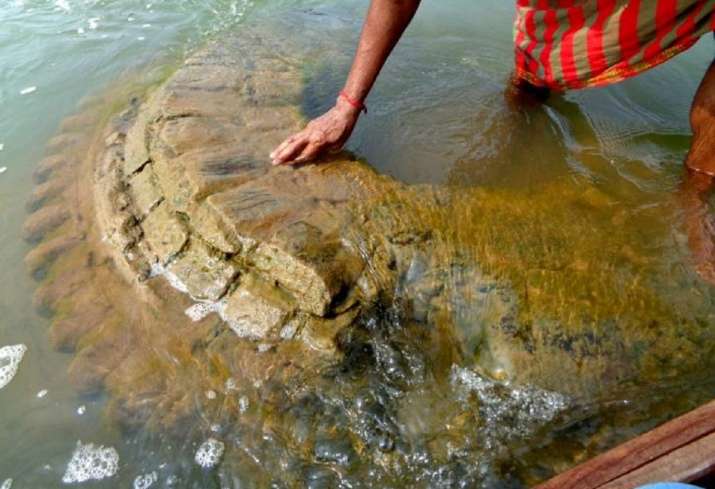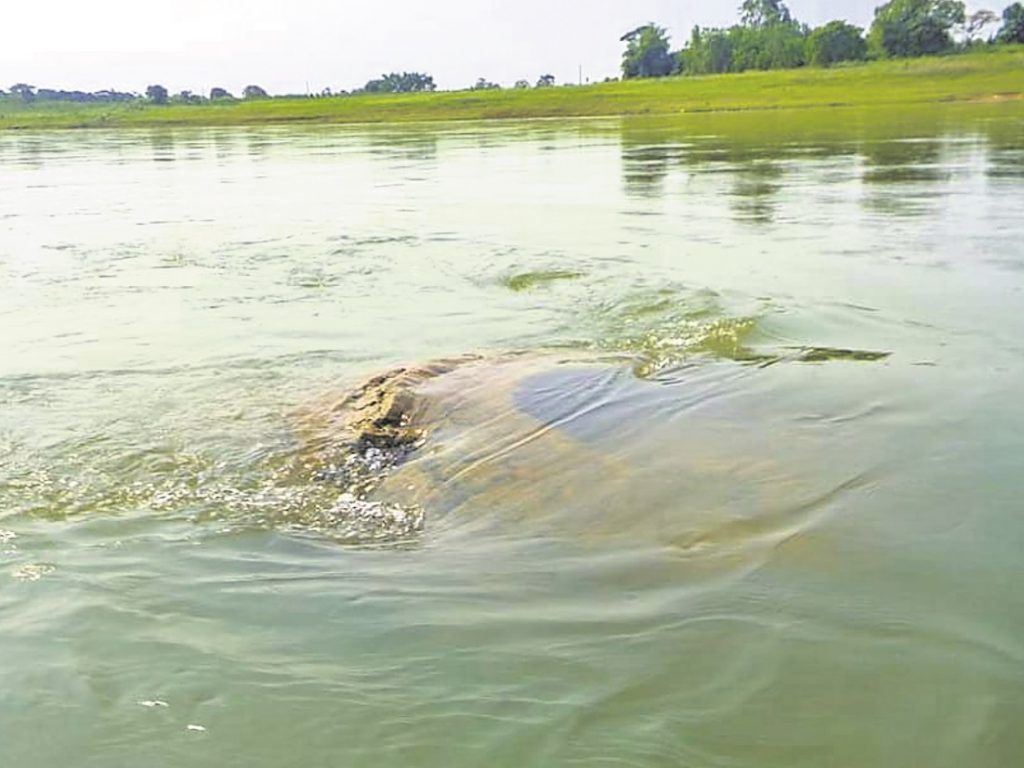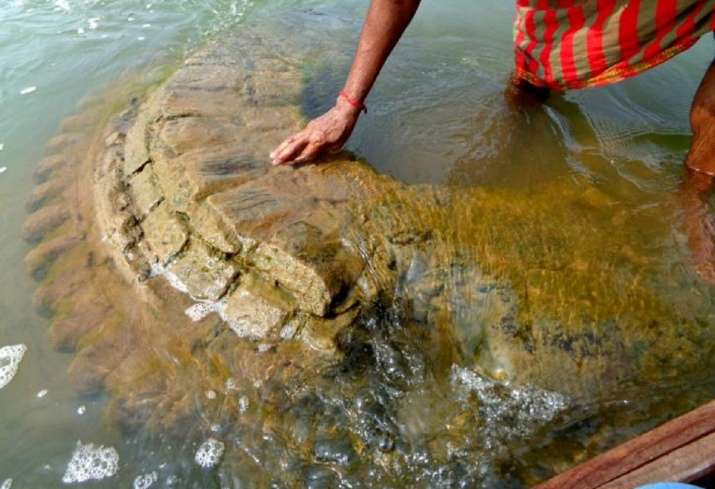Of the numerous sites speaking of the beauty of Odisha, the Ancient Temple Under Water ancient temples have a distinctive place. The Kalinga architectural elegance with a vintage touch differentiates the temples of Odisha.
The Sun temple in Konark, the Jagannath temple in Puri emerge as the unique buildings of the ancient era. Subsequently, a number of architectural sites and temples belonging to the ancient age were lost due to natural calamities and under the course of nature. Due to unavailability of necessary resources some of the ancient structures could not be reestablished.
Recently, a 500 year old ancient Temple resurfaced from the river Mahanadi in Ancient Temple Under Water the Nayagarh district of Odisha. The temple dates back to the Sangam period of the ancient history. The temple is said to have submerged under the waters of Mahanadi Ancient Temple Under Water for more than one and a half of a century.

Ancient Temple Under Water
As the temple belongs to historic age, it becomes important for us to know in details about the temple, its idols, the building style and the course of actions under which it was submerged. A typical insight of the ancient temple found sinking as a remainance along the coast of Ancient Temple Under Water is below for you.
What and Where?
The district of Nayagarh, situated at about 90 km from the state capital Bhubaneswar, is home to many top tourist attractions in Odisha. The list includes the famous Kantilo Nilamadhaba temple, the Panchupali Prangana, the Odagaon Raghunathjew temple and a lot. Amidst greenery and picturesque environment, one can enjoy the calmness of nature and feel the devotion right in the temple premises.
You can read our another post on Progress of Bee Keeping in Odisha
Padmabati is a small village in the Nayagarh district the floor of which is washed by the waters of Mahanadi. The village is located at a nearest distance from Khandapada village of the district.
The temple is found in submerged state inside water in Padmabati village about which the villagers have a little knowledge. The temple is believed to be approximately between 400 and 500 years of age. The submerging dates back to only about 150 years. As the excavation of an ancient site narrates the unfolded mystery of the history Ancient Temple Under Water , similar results are expected Ancient Temple Under Water of the recovered temple from Nayagarh of Odisha.
Researches Under way
A number of research teams are trying to loosen the knot at the site. Indian National Trust for Arts and Cultural Heritage (INTACH), an archaeology survey team reported about the stumbling of the Mastaka of the temple submerged in Mahanadi at Padmabati village.
According to Anil Kumar Dhir, a research scholar from INTACH, the temple and a village were submerged about 150 years ago when there was a flood in Mahanadi.
Some researchers from IIT Bhubaneswar along with several veteran archaeologists have collected carbon and sediment samples from the river bank, temple’s crown and adjacent areas for procuring a better study. They have also collected samples of deposits from the area by digging the soil besides the river bank.
As per a research scholar from IIT, the walls of the temple is not made from stones rather from bricks. There was a use of special type of brick, different from the today’s one.
Archaeological Survey of India (ASI) is preparing to investigate into the age and construction of the temple.
The Temple and The Idol
The ancient temple dates back to the Sangam Age, as per the expectations of the surveying officials. According to some local people of the area, the temple was visible only 11 years back during the summer. But later it drowned.
The temple is 60 ft tall and is dedicated to Lord Gopinath. Lord Gopinath is one of the incarnations of Lord Vishnu. The behavioural studies of the temple suggests it belongs to the 15th or 16th century of ancient Odisha.

Lord Vishnu is one of the most important Gods worshipped in India. People believe Vishnu to be the care taker of the world. Lord Gopinath is a local name given to Vishnu. In Odisha, many Gods and Goddesses are worshipped under a dear name out of plenty devotion.
The temple was found in the mid-river near Baideswar in the Padmavati area.
History of The Temple
The temple of Lord Gopinath is expected to be a work of the 15 th century AD. A small hamlet, named Padmabati was there in the village during the ancient times. The river Mahanadi flew along its own path blessing the villagers.
In 1933, there was a flood in the river. The Mahanadi changed its course and flooded the whole village. In search of rehabilitation, the villagers left the place and moved to higher regions.
There they built another new village, naming it the same “Padmabati”. The temple of Lord Gopinath got submerged in the waters of Mahanadi.
In due course, the clever villagers have already removed the deity from the temple and installed it in their new village.
Preserving the History
The temple emerges after a number of years. A century old temple is not a ordinary topic. Many things may be explored about the ancient historical times of Odisha. Uncovering the history is always a passion for human beings.
In an attempt to preserve such special ancient monuments, everyone should come up front. The property doesn’t belong to anyone personally. It is of the state’s. It is of the nation’s. The efforts for preservation of a national property should be pledged by everyone.
The villagers are also interested in recovering the ancient temple. Without proper conservation, it would go in vain. Steps are taken by the district collector to call ASI to undertake necessary surveys regarding the same. If efforts are stirred in the perfect direction, the relocation of the temple, preservation and installation of the idol would make the place a spot of tourist attraction in the future.
More: Wanted to download Odishashop.com visit here

